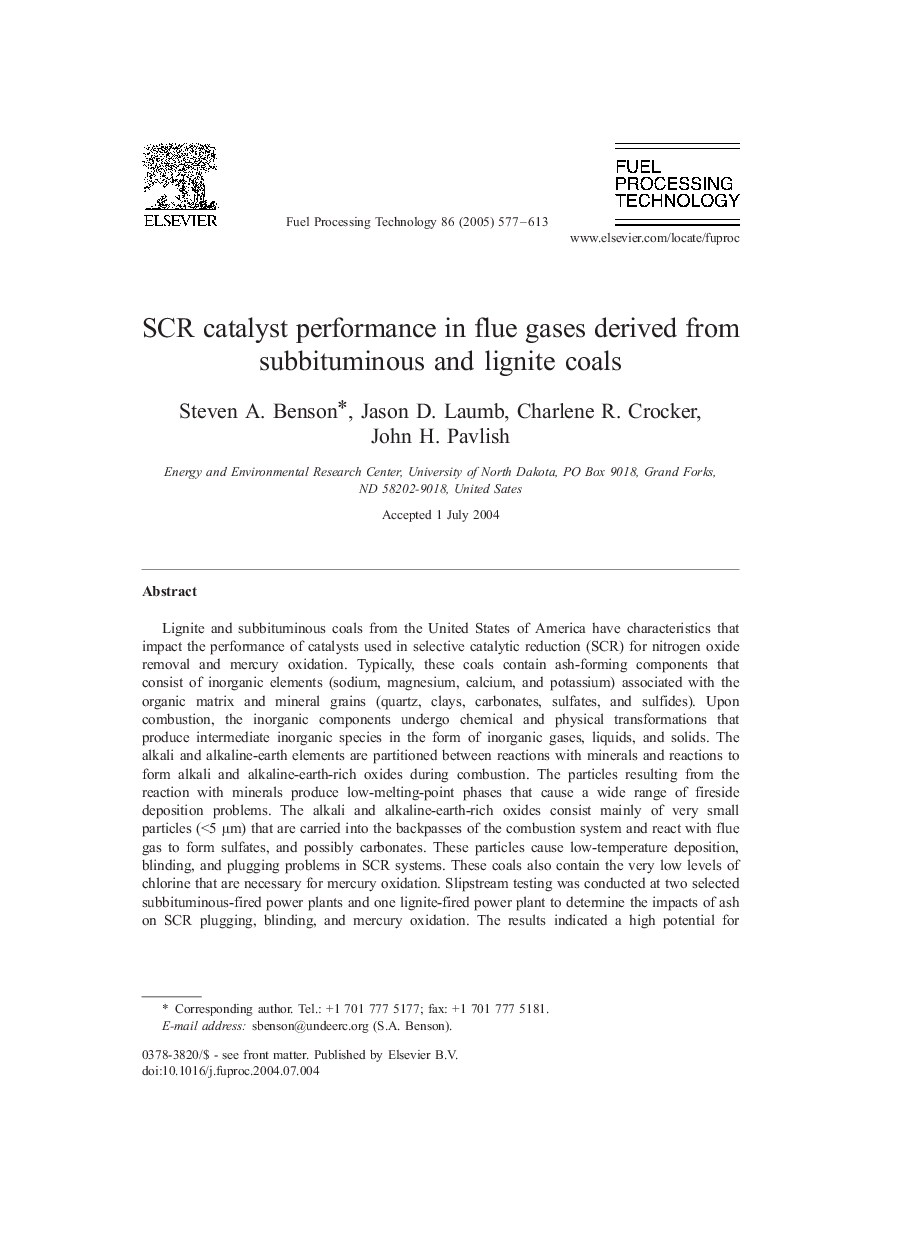| Article ID | Journal | Published Year | Pages | File Type |
|---|---|---|---|---|
| 10274897 | Fuel Processing Technology | 2005 | 37 Pages |
Abstract
Lignite and subbituminous coals from the United States of America have characteristics that impact the performance of catalysts used in selective catalytic reduction (SCR) for nitrogen oxide removal and mercury oxidation. Typically, these coals contain ash-forming components that consist of inorganic elements (sodium, magnesium, calcium, and potassium) associated with the organic matrix and mineral grains (quartz, clays, carbonates, sulfates, and sulfides). Upon combustion, the inorganic components undergo chemical and physical transformations that produce intermediate inorganic species in the form of inorganic gases, liquids, and solids. The alkali and alkaline-earth elements are partitioned between reactions with minerals and reactions to form alkali and alkaline-earth-rich oxides during combustion. The particles resulting from the reaction with minerals produce low-melting-point phases that cause a wide range of fireside deposition problems. The alkali and alkaline-earth-rich oxides consist mainly of very small particles (<5 μm) that are carried into the backpasses of the combustion system and react with flue gas to form sulfates, and possibly carbonates. These particles cause low-temperature deposition, blinding, and plugging problems in SCR systems. These coals also contain the very low levels of chlorine that are necessary for mercury oxidation. Slipstream testing was conducted at two selected subbituminous-fired power plants and one lignite-fired power plant to determine the impacts of ash on SCR plugging, blinding, and mercury oxidation. The results indicated a high potential for blinding and plugging due to the formation of sulfate-bonded deposits and no evidence for mercury oxidation.
Related Topics
Physical Sciences and Engineering
Chemical Engineering
Chemical Engineering (General)
Authors
Steven A. Benson, Jason D. Laumb, Charlene R. Crocker, John H. Pavlish,
